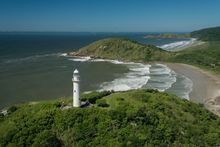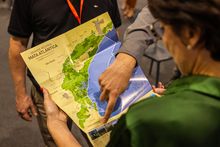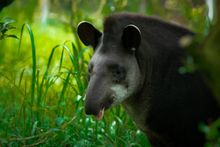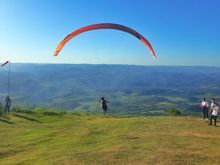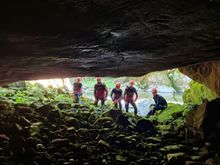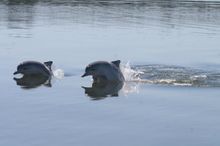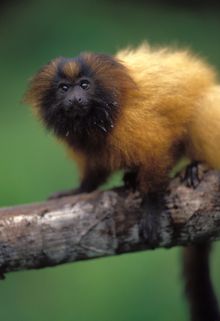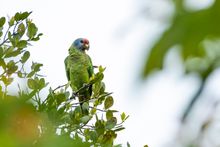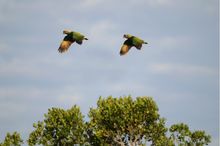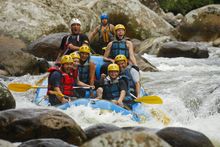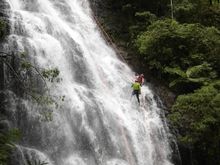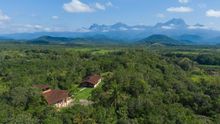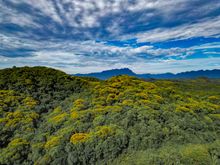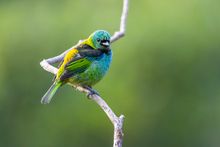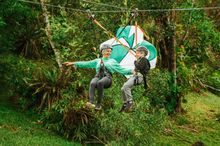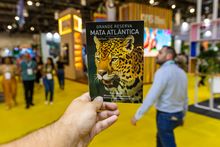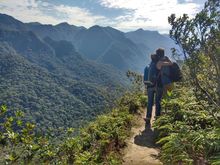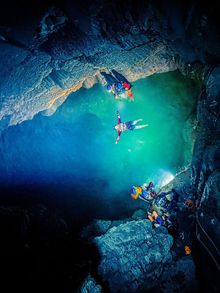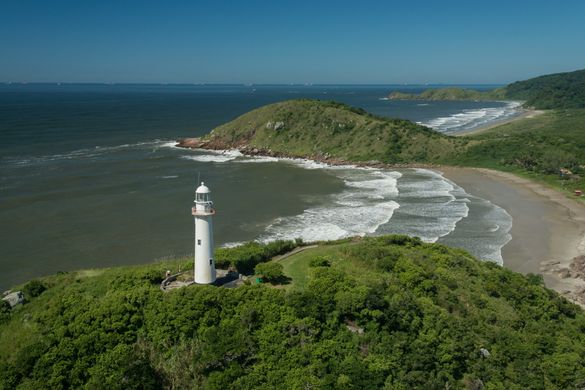 26 Mar 2025
26 Mar 2025
Tags: #AtlanticForest, #AtlanticForestReserve, #sustainabletourism, #BiodiversityConservation, #ecotourism, #NatureConservation, #PreserveNature, #EnvironmentalProtection, #ForestReserve, #GreenTourism

The Atlantic Forest Great Reserve spans an area equivalent to half the size of Costa Rica. It is home to unique species and seeks to promote regional development through nature-based tourism, within the largest remaining fragment of this biome in the world.
The Atlantic Forest is one of Brazil's six major biomes and is among the richest in the world in terms of biodiversity. When the Portuguese arrived in Brazil in 1500, it densely covered much of the country's coastline. Its range includes Brazil's eastern, southeastern, and southern coasts, as well as parts of Paraguay and Argentina. Today, although it is the second-largest forest in Brazil, it is also one of the most historically degraded and currently threatened biomes.
Although the Amazon covers nearly half of Brazil's territory, it is in the Atlantic Forest that most Brazilians live—about 70% of the population resides in areas once covered by this biome, with its diverse forest types and ecosystems like Araucaria forests, mangroves, coastal restingas, and natural grasslands. Today, only about 7% of the Atlantic Forest remains in good conservation status, while the rest is either devastated or heavily fragmented, having lost much of its original biodiversity.
Fortunately, even after this significant reduction, the Atlantic Forest remains one of the most biodiverse regions on the planet. The preserved areas are home to thousands of species, many of them endemic—found nowhere else in the world. According to Brazil's Ministry of the Environment, the Atlantic Forest contains around 20,000 plant species, representing over 35% of all plant species in the country. This remarkable region is not only a haven for nature but also rich in opportunities for the communities that call it home. To harness these opportunities responsibly, the Atlantic Forest Great Reserve initiative was launched in 2018.
What is the Atlantic Forest Great Reserve?
The Atlantic Forest Great Reserve is a voluntary initiative that brings together a wide range of stakeholders—governmental, private, community-based, non-governmental, and academic—to promote regional development focused on nature tourism within the world's largest remaining stretch of Atlantic Forest. The area encompasses around three million hectares of preserved natural environments, stretching across Paraná, southeastern São Paulo, and northeastern Santa Catarina.
With its wildlife, mountains, caves, waterfalls, bays, mangroves, and beaches, the Reserve is considered a natural, cultural, and historical treasure. The initiative aims to raise awareness of the region and establish it as one of Brazil's—and the world's—most important nature tourism destinations.
The area of the Reserve is approximately half the size of Costa Rica—a country long recognized as a global model for nature-based tourism—and it is home to unique species like the black-faced lion tamarin, the red-tailed amazon parrot, and the southern muriqui monkey, many of which are threatened or endemic.
Thanks to its privileged location—where the Serra do Mar mountain range meets the Atlantic coast—this natural heritage has endured until today. It is also a world-class hotspot for birdwatching, with numerous species found nowhere else. The rugged terrain provides vital watersheds that supply water to both small communities and major urban centers nearby.
Ricardo Borges, Communications and Strategic Partnerships Coordinator of the initiative, explains that the movement was born from the conviction that preserving and conserving nature is essential for planetary balance and the survival of future generations.
“The Atlantic Forest Great Reserve works to promote the idea that tourism, when carried out responsibly and sustainably, can be a positive economic activity. It can enable a restorative economy and improve the quality of life for dozens of traditional and historic communities. The initiative offers a unique opportunity to conserve one of the world's most biodiverse regions. The Atlantic Forest is a national treasure that must be valued, recognized, and preserved by all,” he emphasizes.
A Horizontal and Inclusive Network
The Atlantic Forest Great Reserve is built upon a horizontal governance model. It is a voluntary network with no hierarchical structure, aiming to coordinate, develop, and strengthen actions for the conservation and promotion of the region's natural, cultural, and historical heritage as tourism destinations. Its existence depends on the direct and voluntary support of individuals and institutions.
The territory is home to many communities, including Indigenous peoples, caiçaras (traditional coastal communities), and quilombolas (Afro-Brazilian communities descended from enslaved peoples). Marcos Cruz, a tourism specialist and coordinator of the Great Reserve's Portal Network—which brings together members of the initiative—emphasizes the inspiring stories of those who dedicate their lives to protecting and promoting local biodiversity and culture.
“There are many people—entrepreneurs, educators, public servants, researchers, conservationists, and others—who are making the Great Reserve more widely known and impactful, especially through collaborative work and the establishment of shared goals for the region's future,” he explains.
Growing Commitment
By the end of 2024, of the 60 municipalities that make up the Atlantic Forest Great Reserve, 39 had already signed the official Letter of Commitment. This document formalizes their intention to contribute to a more sustainable development model for the region and its people.
“This means that in just two and a half years, since the offer was extended to the 60 municipalities, over 50% have formally acknowledged the initiative as an opportunity for regional development. These municipalities have committed to supporting the Reserve and have begun to adopt best practices in local governance and management,” says Marcos Cruz.
The letter includes a range of commitments, such as the creation and strengthening of environmental and tourism departments, establishment of municipal environmental and tourism councils, participation in tourism governance structures, business training, support for nature-based and socially impactful enterprises, and other initiatives.
Tourism Highlights
The Atlantic Forest Great Reserve is home to over 110 Protected Areas, including parks and reserves, featuring stunning landscapes and lush biodiversity. The parks, in particular, play a vital role in this context. They are considered the region's “anchor stores,” housing its main attractions and drawing the largest numbers of visitors. In places where this model is already established—such as the United States, parts of Africa, or Costa Rica—nature tourism generates billions of dollars annually, boosting local economies around these protected areas.
In addition to its natural wealth, the region has deep cultural value, reflected in the traditions of caiçara, Indigenous, and quilombola communities, as well as those of immigrant populations who have settled in the area. Visitors can enjoy a wide range of local foods and handmade products. The presence of ancestral peoples is evident in the numerous sambaquis (shell mounds) and archaeological sites, as well as in the beautiful historic towns, scenic routes, and old trails that weave through the landscape.
The variety of activities available is vast. The region has long been a reference for adventure tourism. On the water—of which there is plenty—visitors can enjoy kayaking, rafting, tubing, or simply swim in rivers, waterfalls, or the ocean, and explore the bays. On land, there's just as much to experience, with hiking trails for all skill levels, rock climbing, caving, rappelling, and stunning lookout points. There are also cycling routes and 4x4 expeditions. For thrill-seekers, free-flight activities are available as well.
For those more interested in wildlife observation, the region is also a standout. Tropical rainforests are naturally mega-diverse, and the Atlantic Forest adds high rates of endemism—species found nowhere else in the world. For birdwatchers, the region is a top-tier hotspot, with impressive concentrations of bird species in certain areas. In the bays, visitors can see dolphins and flocks of colorful birds such as the scarlet ibis and the red-tailed parrot. For a more exclusive experience, some tours offer sightings of the southern muriqui monkey, the largest primate in the Americas. Watching lowland tapirs is another incredible option.
YouTube
The Atlantic Forest Great Reserve's YouTube channel features a series of videos that showcase the region's many natural and cultural treasures. The videos are available in both Portuguese and English and can be viewed
About the Atlantic Forest Great Reserve
The Atlantic Forest Great Reserve is a voluntary initiative that brings together a wide range of actors—public, private, non-governmental, and academic—to jointly promote regional development through nature-based tourism within the world's largest remaining stretch of Atlantic Forest. The territory covers approximately 3 million hectares of conserved natural environments, spanning across the states of São Paulo, Paraná, and Santa Catarina. This area is recognized as an important natural, cultural, and historical heritage site, and the initiative seeks to promote it as a nationally and internationally recognized nature tourism destination.
Press Contact
For media inquiries about the Atlantic Forest Great Reserve, please contact:
Claudia Guadagnin
Phone: +55 41 99803-4948


